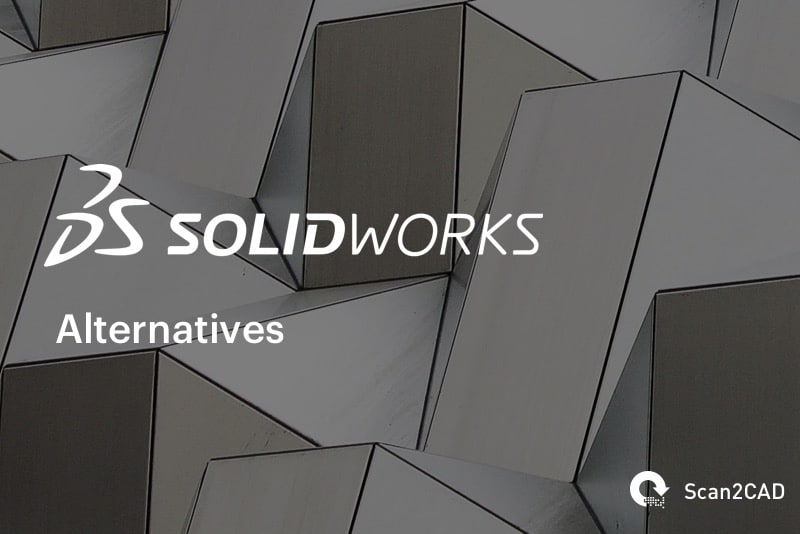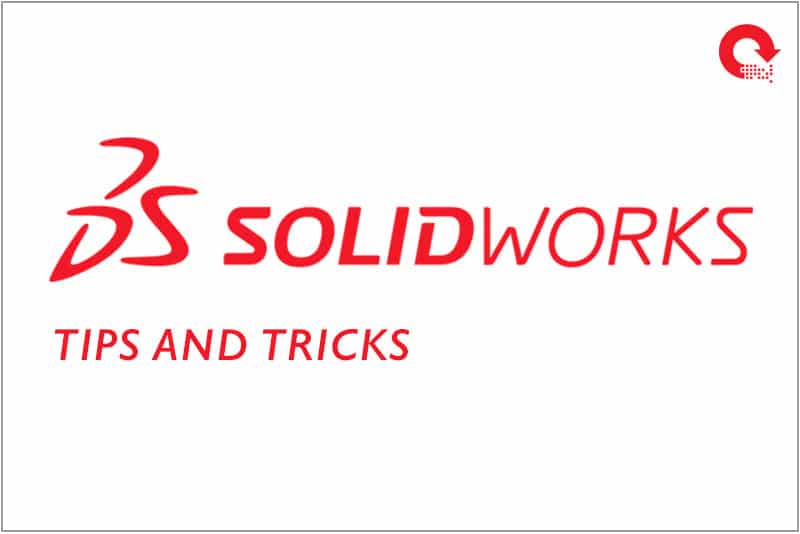Here at Scan2CAD, we like to keep our readers informed on all the biggest CAD software available. If you’re one of our regular readers or just a general CAD user, you should be more than familiar with the flagship software from Dassault Systèmes—SolidWorks. We’ve discussed in the past the advantages to using such a product. Unfortunately, not all CAD users can afford to invest in SolidWorks. So, what can we do? Simply invest instead in affordable SolidWorks alternatives.
Our guide will show you our top 5 affordable SolidWorks alternatives including prices, feature comparisons and much more.
Before We Start
It’s easy to see why SolidWorks is so popular across industries, hobbyists and students. With 2D, 3D and parametric capabilities, SolidWorks has a lot to offer. If you’re looking to buy if for yourself however, you might end up setting yourself back. There are three different versions of SolidWorks currently available (excluding industry-specific packages):
- Standard: $3,995
- Professional: $5,490
- Premium: $7,995
You can expect additional costs on top of these prices if you want a one-year subscription service. If you’re a CAD professional or part of a larger business, this price will be more than paid back by the high-quality output. For those of you who see themselves as a pure hobbyist or living on a tight budget, you might want to look beyond SolidWorks.
If you’re a student, you can get SolidWorks for free—see our students’ guide to CAD to find out what else you can get for free. If you’d prefer not to have to spend any money, we’ve got the perfect answer—14 top free CAD packages to download. Bear in mind that they won’t have a fraction of the capabilities offered by software like SolidWorks or AutoCAD, but that’s usually a given with free software. If you’re looking for software that offers some, if not all, of SolidWorks’ functionalities and features, then keep on reading.
1. Autodesk Inventor
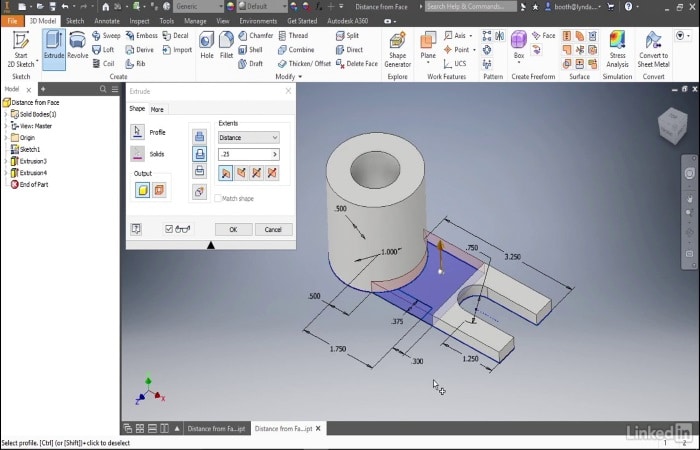
- Operating System: Windows
- Price: $1,890/year or $5,670/three years
- Interested? Try out the free trial!
If you like to frequent our blog, you should be more than familiar with CAD giant Autodesk. Although we tend to focus predominantly on AutoCAD, we’re going to look here at another popular Autodesk product—Inventor. Offering solutions for 3D mechanical design, simulation and communication, Inventor is a direct competitor of SolidWorks. Additionally, it comes with powerful parametric and freeform modeling tools.
Head-to-head comparison
For SolidWorks users, Inventor might be an interesting software package to get to grips with. Why? While SolidWorks is limited primarily to engineering, Inventor targets both engineering and architecture. As such, you might find yourself being able to do a bit more than you could previously with SolidWorks—especially if your interests lie in architecture. If you’ve worked with Autodesk software before, you’ll find Inventor’s interface to be relatively straightforward.
As with AutoCAD and SolidWorks, Inventor comes with a handy command line and keyboard shortcuts which speed up your entire design process. Moving beyond parametric and assembly modeling capabilities, Inventor also comes with a shape generator, enabling users to create high-performing design options in mere minutes. Users can also enjoy Inventor’s superior rendering capabilities—seeing their completed designs in a real-world capacity.
Seeing as we’ve described Inventor as a lighter product, you won’t be surprised to hear that SolidWorks has more advanced features—fastener mating, for example, is much easier to do in SolidWorks. Inventor has a smaller online presence—in tutorials and resources—which can hinder your overall learning curve.
Verdict
SolidWorks is by far the superior package—with advanced tools like motion, stress and thermal analysis—causing Inventor to fall behind slightly. That being said, Inventor has a lot to offer people looking for affordable SolidWorks alternatives. If you don’t need the heavy, advanced capabilities of SolidWorks, Inventor might be your new go-to package.
2. Rhino3D
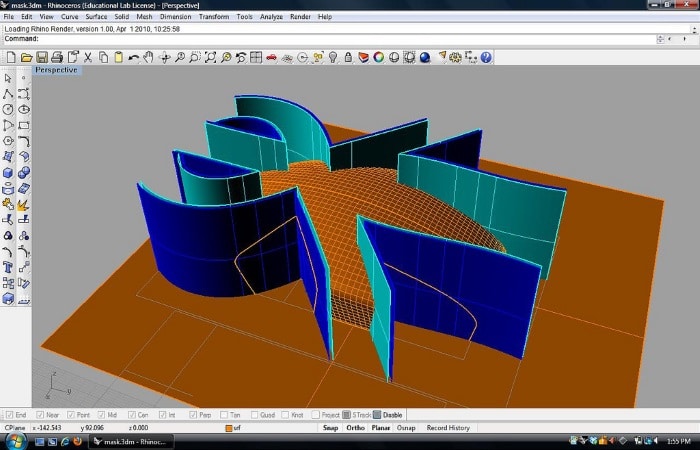
- Operating System: Windows, Mac
- Price: $995 (Windows), $695 (Mac)
- Interested? Try out the free trial!
A 3D graphics and CAD software, Rhino offers SolidWorks users a different spin on modeling. Based on the NURBS model, Rhino is a free form surface modeler. Unlike SolidWorks, Rhino spans across a wide variety of (mostly creative) industries including industrial design, architecture and product design.
Head-to-head comparison
One of the first things you should bear in mind with Rhino is that it isn’t the same as mechanical engineering software. That is, it’s built primarily for creative design—spanning across a wide variety of industries. So, what makes it so popular? It’s intuitive, light and a stable software package compared to other commercial 3D modelers.
With Rhino you get full creative licence to build whatever you want without conforming to the rigid constraints of other software. Like SolidWorks and many other CAD programs, Rhino comes with a series of command features—enabling users to do more with just a few keyboard shortcuts. Not only does Rhino provide a wide variety of customization tools, it also enables add-on plugins. Grasshopper, for example, is a visual programming language used primarily to create generative algorithms and flow-chart style commands. In short, the sky’s the limit when it comes to design in Rhino.
Unfortunately, Rhino’s flexibility can work against itself. While you can create whatever comes to mind, it’s all too easy to create a part that’s not manufacturable and might not import well into other CAD packages. Issues like intersecting lines can also occur rather frequently. It’s for this reason that Rhino might not be a preferred modeler if you’re looking for precision.
Verdict
Rhino 3D is a package that truly enables users to create all types of designs imaginable. If you’re looking for ultimate precision, however, you might want to look elsewhere. While it’s perfect for escaping the ordinary constraints of other software, Rhino isn’t really suitable for production—you can’t get solid objects, so it’s mostly useful for mocking up ideas.
3. Solid Edge
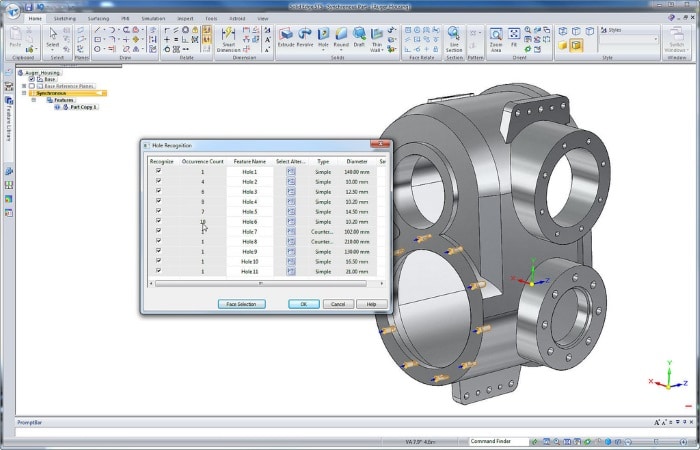
- Operating System: Windows
- Price: $99 to $299/month
- Interested? Try out the free trial!
Solid Edge is a 3D CAD software developed by Siemens PLM Software. While you might not be familiar with it, that doesn’t mean you should disregard it. Not only is it a solid modeler, it also comes with synchronous technology—a feature that polarizes many users. Popular amongst mechanical engineers, Solid Edge also has links to PLM technologies.
Head-to-head comparison
To start off, Solid Edge is a lot more basic than SolidWorks. While this can be off-putting for some users, others might find it to be a welcome change. After all, what’s the point in investing in software like SolidWorks if you’re not using all of its advanced features? Coming with an easy interface and full parametric modeling, Solid Edge provides an easy learning curve for beginners and CAD experts alike.
You might find the user interface to be a little bit cluttered the first time you’re introduced to it. Once you take a closer look, however, you’ll find that the UI tends to group all necessary commands together, making it easier to find everything you need. With four types of modeling capabilities—ordered, direct, synchronous and assembly—you’ve got a lot to play around with. Solid Edge also integrates Sharepoint and Teamcenter to provide Product Lifecycle Management, not to mention full support for Finite Element Analysis (FEA).
One of Solid Edge’s most polarizing features is its synchronous technology. While it can combine the speed of direct modeling with the flexibility of parametric design, it can also be difficult to grasp. If you take the time, however, it could very well improve your overall performance and productivity.
Verdict
If you don’t need all of SolidWorks’ capabilities—or you’re tired of it burning a hole in your pocket—you might want to consider making the move to Solid Edge. Bear in mind, however, that you’ll have to put in some serious effort to get to grips with its synchronous technology.
4. Onshape
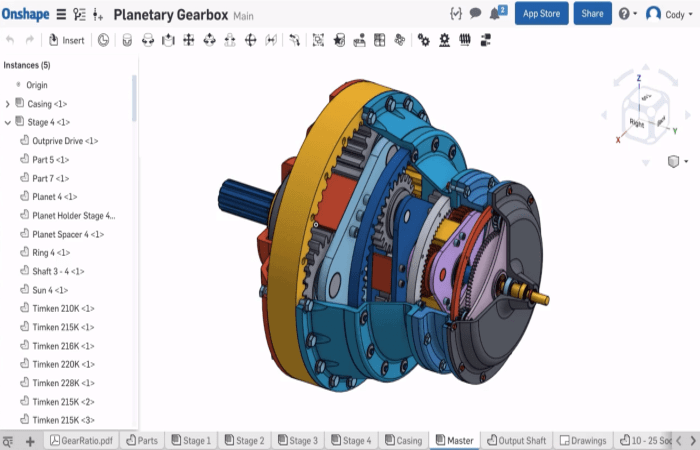
- Operating System: Windows, Mac, Linux, iOS, Android OS
- Price: Free, Professional $125/month
- Interested? Try out the free trial!
If you’re a regular Scan2CAD user, you might be familiar with Onshape—a CAD system delivered over the Internet as an SAAS model. As we’ve discussed in our guide to cloud-based CAD, Onshape enables users to create, edit and share models through just a web browser or the iOS and Android apps. There’s a free version—ideal if you want to test the waters—and a professional version.
Head-to-head comparison
Where should we start with Onshape? As a cloud-based 3D CAD modeler, Onshape enables users to reap a wide variety of benefits. With it, you no longer have to worry about buying workstations, long installations or updating licences. If you’re constantly sharing files, you might be pleased to hear that you can even send designs to people who don’t have an Onshape licence, to view in their own browser.
In the era of the cloud, Onshape is certainly at the forefront of the CAD industry. Offering robust parametric 3D modeling, multi-part modeling and in-context editing, Onshape is intuitive and the perfect collaborative tool. It doesn’t matter if you’re collaborating with people across the world, Onshape enables you to collaborate in real-time, erasing the issue of duplicate designs. It even has an app store where you can purchase add-ons for simulation, rendering, CAM and much more.
There isn’t currently an offline version of Onshape, which can be a pain if you’ve not got access to the internet. That being said, WiFi is pretty widespread nowadays, so it shouldn’t be too much of an issue. Some users have noted that there can be long loading times, however this is an issue that most CAD programs are susceptible to.
Verdict
SolidWorks is a powerful package; however, it can’t do anything to combat against bad team workflows. Onshape, by comparison, is able to create a seamless workflow between teams and clients. While it might take you a while to get used to it, you might want to consider moving out of the Dark Ages and embracing cloud-based CAD.
5. Fusion 360
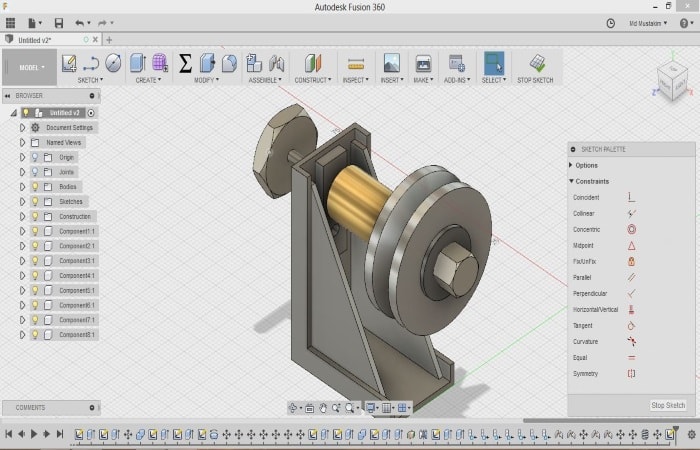
- Operating System: Windows, Mac
- Price: $40/month, $300/year, $600/2 years
- Interested? Try out the free trial!
Citing itself as the first 3D CAD, CAM and CAE tool of its kind, Fusion 360 is certainly a powerful tool to consider. While not one of Autodesk’s most well-known products, Fusion 360 is another cloud-based tool that you should test out as a viable, affordable SolidWorks alternative.
Head-to-head comparison
An all-in-one design and mechanical engineering package, Fusion 360’s interface might be a little bit overwhelming for new users at first. Once you get the hang of it, however, you’ll find it to be an intriguing alternative to SolidWorks. With everything available in a single package, you can easily go from design to prototype in a matter of hours or days—as opposed to months.
You’ll find some of Fusion 360’s tools to be familiar, especially if you’re a SolidWorks user. Bear in mind that it is a lighter package however, so aspects like assembly functions are relatively limited compared to SolidWorks. Like Onshape, Fusion 360 offers parametric modeling, rapid prototyping and speedy rendering. Some users have also been pleased to note that it comes with a history tree and a fluid workflow—courtesy of the cloud.
As with most software however, the larger your model, the more cumbersome the process. If you’re working with large-scale models, you might struggle with using Fusion 360. Additionally, it lacks more powerful design generators, mechanical simulations and documentation tools.
Verdict
Fusion 360 offers the same kinds of benefits as Onshape. With it being cloud-based, you’re not constrained to a single, desktop package. You might, however, end up sacrificing the more powerful functionalities you’re used to with SolidWorks. The main difference between Fusion 360 and Onshape lies in the price and interface—Fusion 360 is cheaper and offers a more familiar ground for previous Autodesk users.
Want to become a CAD expert? Keep an eye on our CAD section for our latest tips, tricks and advice.

